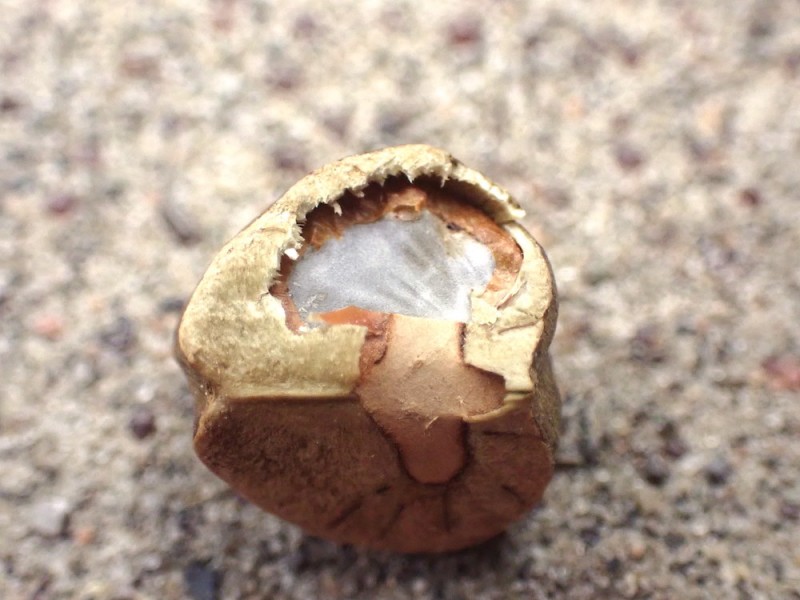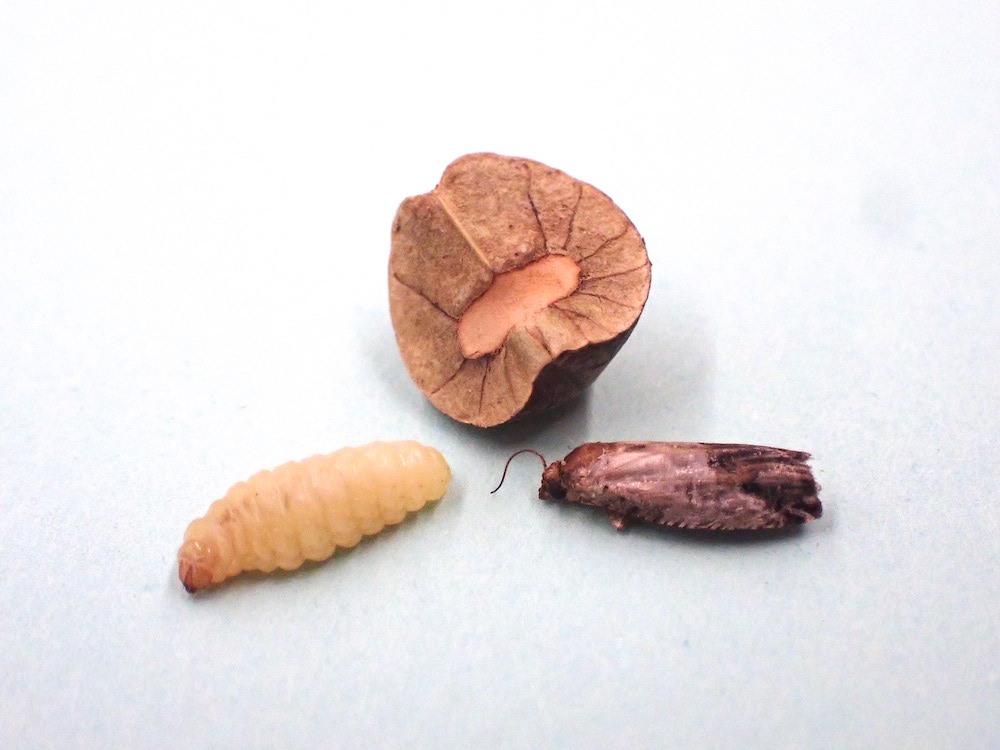What makes Mexican jumping beans jump? New research from Binghamton University reveals that Mexican jumping bean larvae respond to different colors of light, jumping more vigorously under different hues, which can help them avoid potentially dangerous temperatures. However, when their 'bean' hosts are damaged, larvae find it much harder to jump away from stressors.
Mexican jumping beans are sold as toys, something you might buy on vacation at the boardwalk, but they're actually seeds infected with the larvae of little white moths. The seeds "jump" when the larvae inside strike the inside of the wall, causing them to move.
"When a seed drops to the ground from shrubs, the moth larva inside is at the mercy of whatever environmental temperature the seed experiences," said Lindsey Swerk, assistant research professor of biological sciences. "The ground could be scorching hot in direct sunlight. A little moth larva inside of a seed like this can only withstand so much heat - and so they jump away."
The seeds that these moth larvae inhabit are part of its 'extended architecture', which is a term to describe a structure that an organism uses as part of its body but doesn't create itself (think of a hermit crab's scavenged shell). In the case of Mexican jumping beans, the seed is a larva's extended architecture.
Very little is known about Mexican jumping beans and how they respond to stressors in their environments. To learn more about these seed-bound caterpillars, Swierk and her students designed two experiments.
In a study published in Behavioral Processes, the team explored how different colors of light impact movement behavior in the larvae. Swierk's students (Faith Summers, Amber Tuske, Cassandra Puglisi, Annie Wong, and Andrés Rojo) hypothesized that changes in hue might provide an "early warning system" for larvae to avoid extreme heat. The students tested larval movement in reaction to different lighting conditions (red, purple, and green light, with white light as a control) and how much of that light actually penetrated the seed wall to reach the larvae. Although less than 1% of light actually penetrated the seed wall, larvae moved the most under red light and the least under purple light, which are at opposite ends of the visual spectrum.

"Somehow larvae are picking up on these differences. Whether that's because of very minute temperature changes or because of extremely sensitive photoreceptors, we're not sure yet," said Swierk. "But they're using light somehow as a cue to change their behavior, which probably has to do with the fact that these different lighting spectra are correlated with different environmental conditions. Red and white light are more characteristic of daytime lighting, while green and purple light are associated with the light under forest canopies or sunset and sunrise."
Expanding on the theme of how the environment influences jumping behavior, Swierk and her students next explored a fascinating tradeoff. Larvae have the ability to repair damage to their host seeds with silk threads, but this could affect their ability to avoid heat by jumping. In a second paper published in the Journal of Insect Behavior, Swierk's students (Anna Purtell, Jesse Anderson, Rebecca Ferguson, Konrad Juskiewicz, Michael Lee and Megan Lee) predicted that making a silk repair patch would be costly to the larva and reduce its ability to jump away from a heat stimulus.
The researchers designed an experiment where some larvae had damaged seed walls they could repair, and others had damaged walls but no time for repairs. A third control group experienced no damage at all. Both damaged groups were less likely to jump in response to high temperatures, while the control group responded appropriately and moved out of the way.

Swierk said this suggests that the damage itself, and not the cost of silk production, in some way hinders movement in these larvae. It's possible that seed damage like this, which mimics predators in nature, can disconnect the silk threads that attach a larva to the inside of a host seed so that it couldn't make a rocking or jumping movement.
"These are animals that are extremely sensitive to temperature. A common story here is that we see these larvae using very nuanced cues to change their behavior in response to heat, and we're also seeing that additional stressors like predation attempts can impair their ability to appropriately respond to temperature," said Swierk.
This research has potentially broader implications for insects around the world, said Swierk.
"Responding to temperature change is a big deal. As the climate changes, we need to learn how animals detect imminent thermal stress and what limits their adaptive responses. What we learn about Mexican jumping bean larvae might help us better understand how other insects with limited movement cope with heat stress in their environments."








